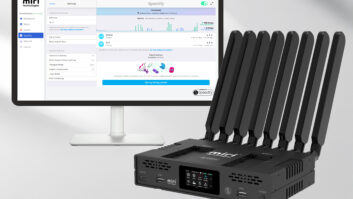Santa Clara, Calif. — A desktop modem planned by Netgear will combine wireless 802.11a/b/g technology with Flarion’s wireless Flash-OFDM wireless wide-area-network technology (WAN) for use in Nextel’s wireless broadband trials.
The modems could be available soon through Nextel-owned stores and Nextel dealers in the trial market of Raleigh-Durham, the company said.&?xml:namespace prefix = o ns = “urn:schemas-microsoft-com:office:office” />&o:p>&/o:p>
The new device will complement an OFDM-equipped PC Card and an Ethernet-connected desktop modem, each available at $49.99. Thanks to 802.11 technology, the new modem will connect wirelessly in homes to multiple desktop computers and with 802.11-equipped portable PCs.&o:p>&/o:p>
Flash-OFDM (Othogonal Frequency Division Multiplexing) delivers average downlink speeds of 1Mbps, with bursts to 3.2Mbps, in fixed and portable applications and in moving vehicles at speeds up to 200 mph. Average downlink speeds are 300Kbps to 500Kbps, with bursts to 900Kbps, with network latency of 50ms or less, making it suitable for voice over IP (VoIP) applications, said said Flarion’s marketing VP Ronnie Haraldsvik.&o:p>&/o:p>
Flarion is marketing its technology to licensed wireless carriers, including cellular carriers, who would provide portable and mobile broadband access to laptop users or fixed-wireless Internet access to homes and business in markets or neighborhoods lacking DSL or cable-modem service, Haraldsvik said.&o:p>&/o:p>
In the United States, Flarion is also in trials with Washington D.C. public-safety officials, and Aloha Partners plans to use its 700MHz spectrum in the top 40 markets to offer service to public-safety agencies, homes, and mobile users. Nextel is trialing the technology in the 1.9GHz band. &o:p>&/o:p>
Flarion claims superiority over CDMA 1x EV-DO, which it said delivers an average 200Kbps downlink, average 60Kbps uplink, and 250ms latency that isn’t ideal for VoIP applications.&o:p>&/o:p>
&o:p> &/o:p>













